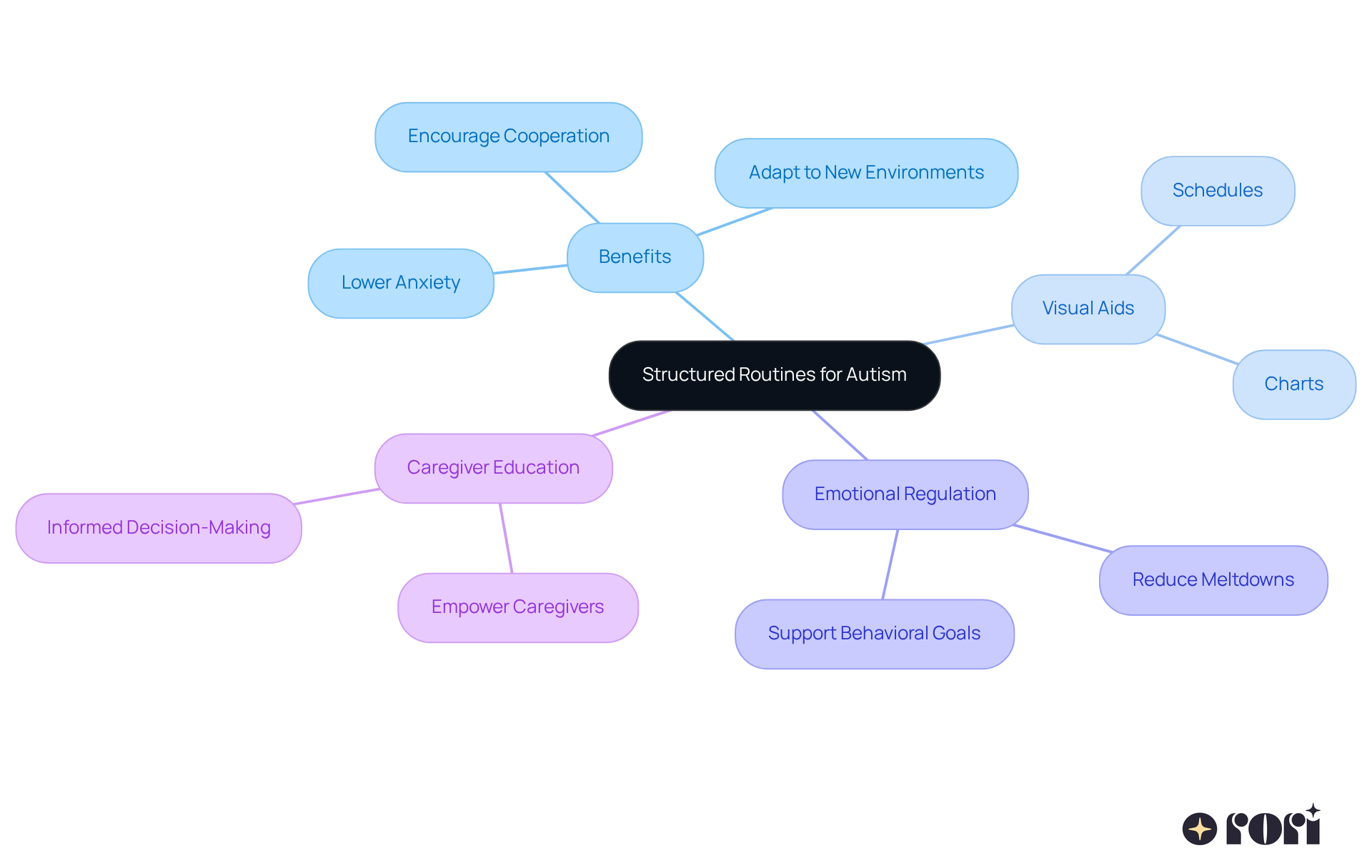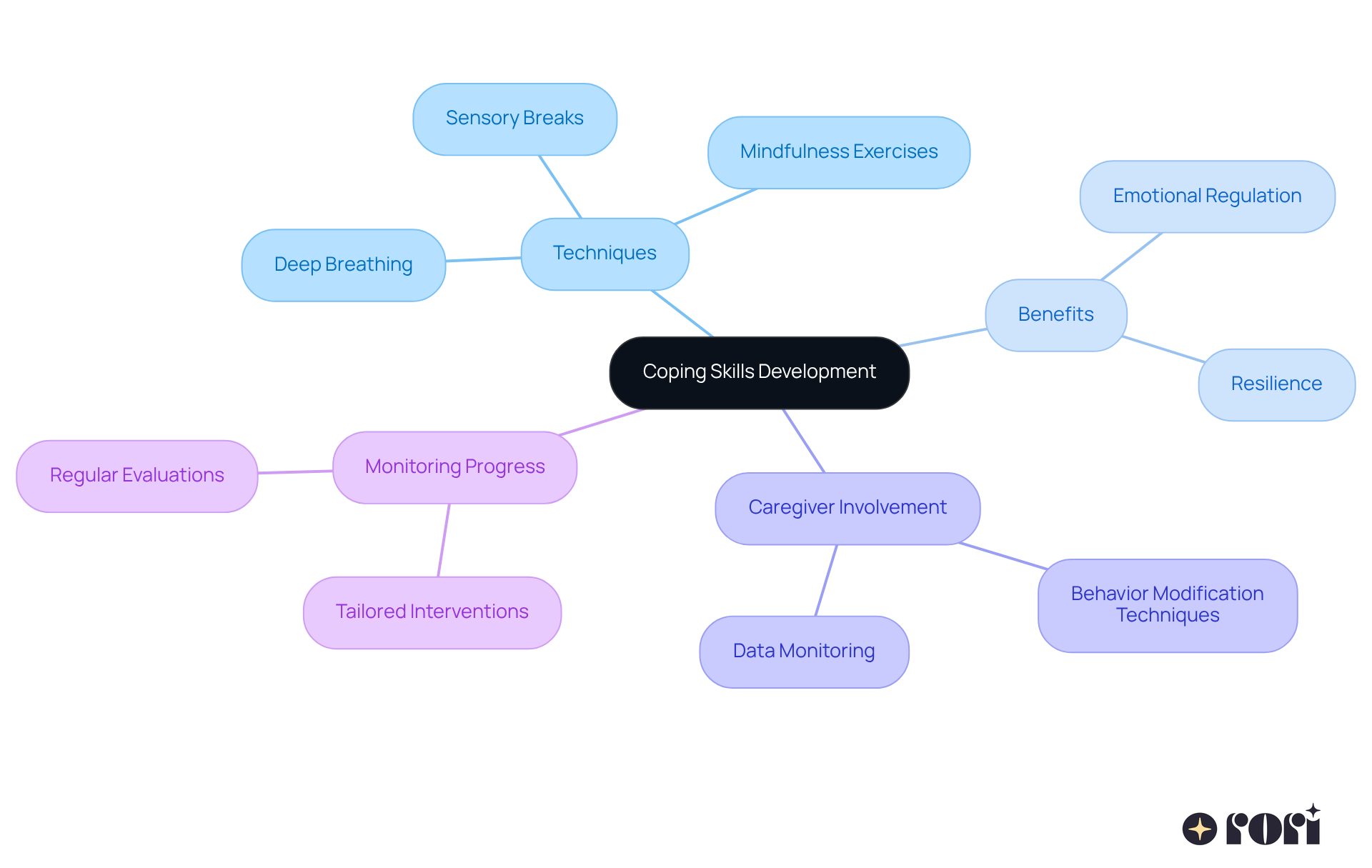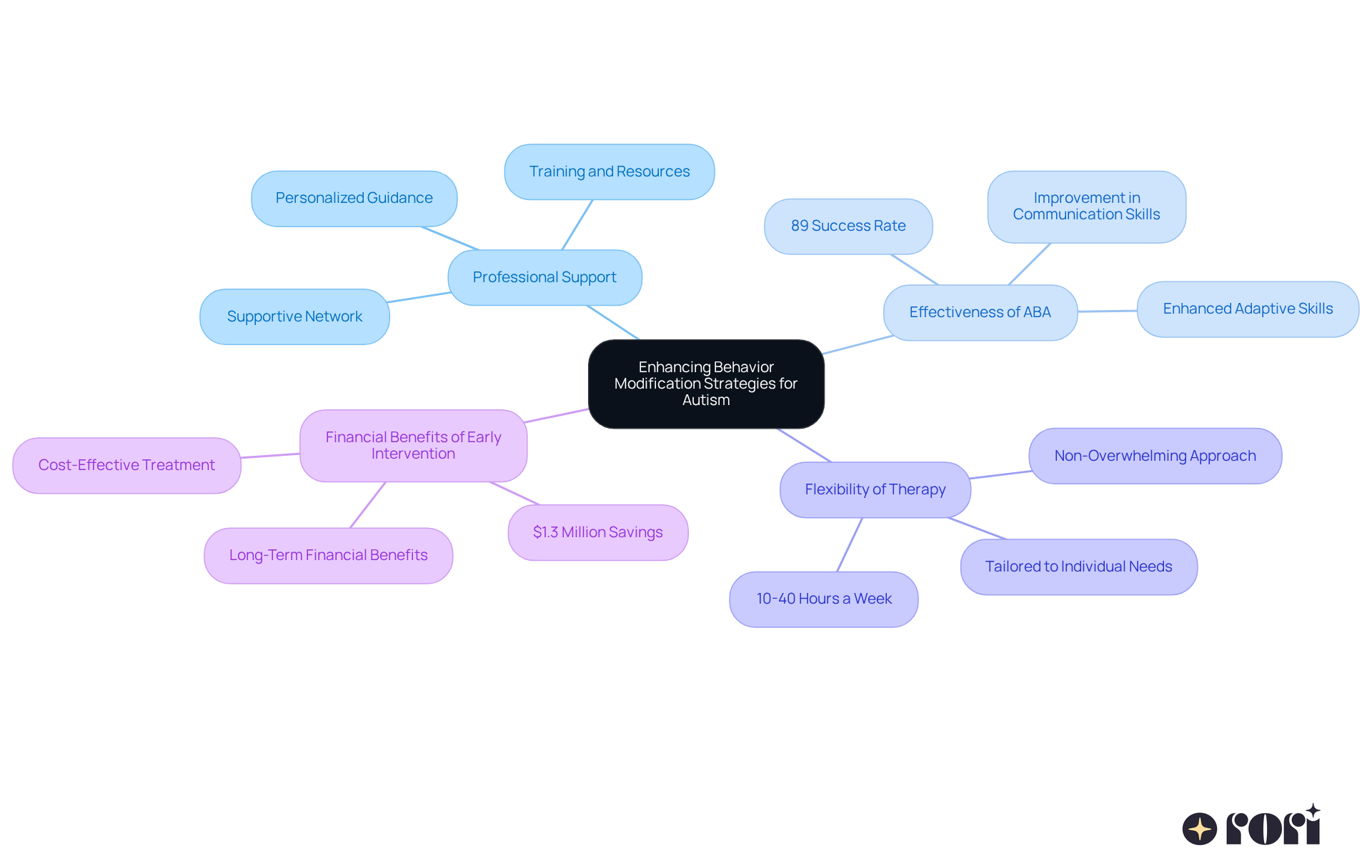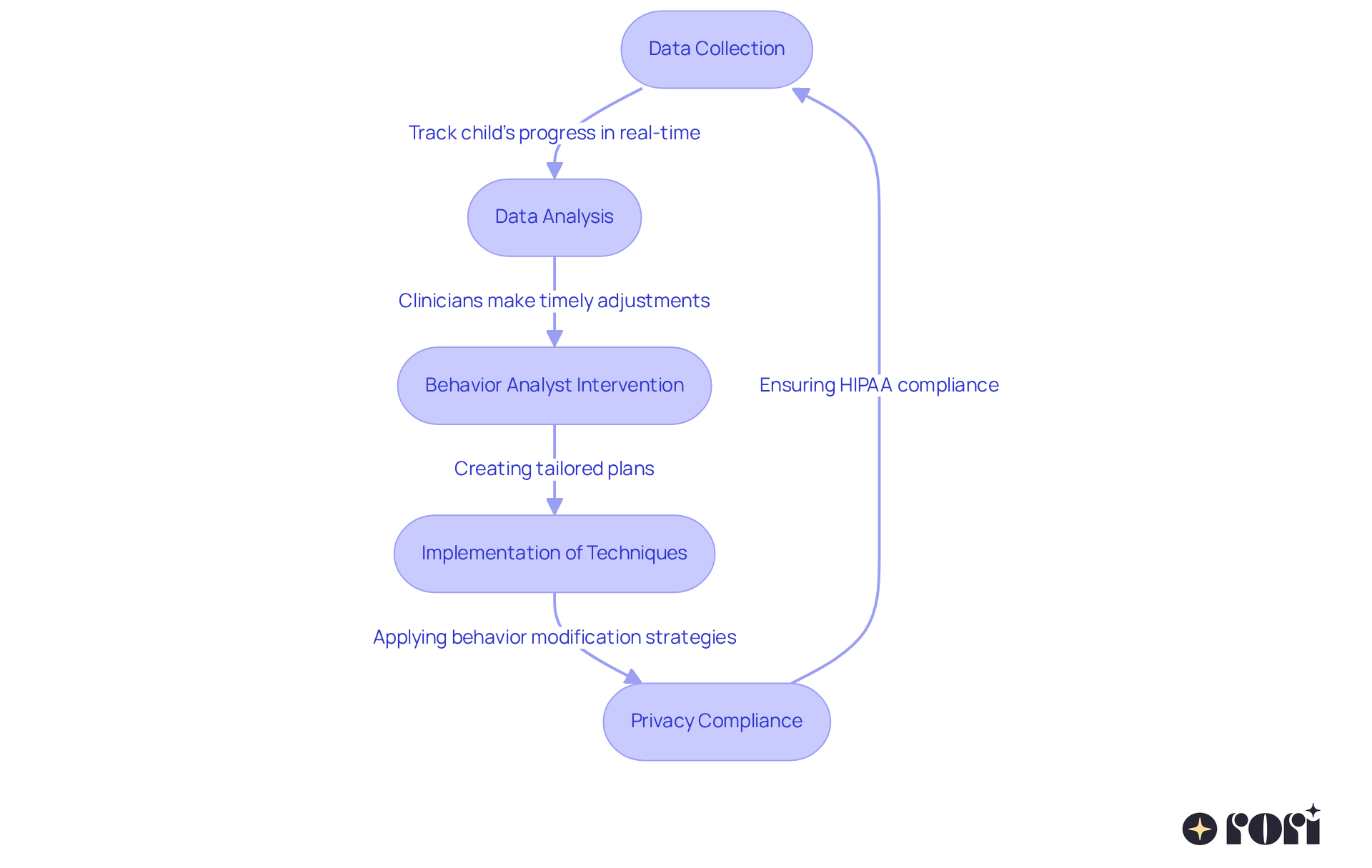Understanding the ins and outs of behavior modification techniques is so important for providing effective care for children with autism. These strategies not only help encourage positive behavior but also empower families to create supportive environments that cater to each child's unique needs.
But with so many methods out there, how can caregivers figure out which techniques will really make a difference? 🤔 This article dives into ten essential behavior modification techniques that can truly transform autism care. We’ll explore how to implement them and the amazing impact they can have on children's development. Let’s explore this together!
At Rori Care, we take a friendly and comprehensive approach to ABA therapy. It all starts with a thorough assessment of each individual, which helps us craft a personalized treatment plan focused on specific behaviors and developmental goals. Our passionate clinicians are here to guide your family through this journey with compassion and expertise.
We know that every child is unique, and that’s why we integrate data-driven insights with proven ABA techniques. This ensures that each child receives the most effective interventions tailored just for them. Imagine having a plan that’s made just for your child’s strengths, challenges, and goals - that’s what we aim for!
Key components of our program include individualized planning. We set clear, measurable objectives for behavior change and skill development, giving you a transparent standard to track progress. Our analysts use evidence-based strategies rooted in the latest research, ensuring we apply the best techniques for meaningful change.
And it doesn’t stop there! We consistently monitor your child’s progress and responsiveness to the interventions, making adjustments as needed to enhance outcomes. This way, we promote improved results in behavior modification techniques for autism care and skill development.
Let’s explore this journey together! We’re here to help you every step of the way!

Positive reinforcement is all about offering a little reward or incentive after a desired action, which helps make it more likely that the action will happen again. For kids with autism, behavior modification techniques for autism care could involve giving verbal praise, tokens, or even allowing them to enjoy their favorite activities. When adults consistently use behavior modification techniques for autism care, they can significantly help kids learn new skills and reduce those challenging behaviors, creating a more supportive learning environment.
Now, let’s talk about the role of educator training. It’s super important because it gives supporters a better grasp of ABA principles and strategies. With this knowledge, they can make informed choices that positively impact their child’s progress. Plus, when caregivers are actively involved, it boosts the effectiveness of positive reinforcement and helps them feel more empowered. This can really cut down on stress and improve family dynamics.
So, let’s explore this together! By understanding how positive reinforcement works and getting the right support, we can make a real difference in our children’s lives. We’re here to help you every step of the way!

Creating organized routines is so important for individuals with autism. It helps them know what to expect during their day, which can really lower anxiety and encourage cooperation. Research shows that having these routines allows kids to adapt more easily to new environments and situations - something that’s crucial for their growth.
Visual aids, like schedules and charts, play a key role in this process. They help young ones anticipate transitions and activities, creating a sense of predictability that fosters security. This predictability not only helps them focus on learning but also supports their behavioral goals. Plus, structured routines can aid in emotional regulation, reducing meltdowns and anxiety. That’s why behavior modification techniques for autism care are a cornerstone of effective autism care.
By incorporating visual supports, caregivers can reinforce these routines even more, making sure kids feel empowered and engaged in their daily activities. At Rori Care, we offer free consultations with our Board Certified Behavior Analyst to assist families in effectively navigating behavior modification techniques for autism care. As specialists point out, "Routine disruptions can significantly affect individuals with autism spectrum disorder (ASD)," which really highlights how important predictability is in their lives.
And let’s not forget about caregiver education! It enhances support, informed decision-making, and leads to better behavioral outcomes. This empowers caregivers to actively engage in their child’s development. So, let’s explore this together! We’re here to help you every step of the way!

Giving kids choices - like picking activities or deciding what to wear - can really help reduce resistance and promote positive behavior. Studies show that when young people have the chance to make choices, they not only work better with others but also develop important self-advocacy skills. This sense of autonomy is key for their growth, as it boosts their feeling of control over their surroundings.
For instance, research suggests that even offering limited options can lead to better engagement and fewer challenging behaviors. When kids feel involved and committed to what they’re doing, it makes a big difference! Plus, weaving choice-making into daily routines helps them practice decision-making in a safe and structured way.
Experts agree that empowering kids through decision-making not only builds their confidence but also sets the stage for greater self-determination down the line. By integrating choice into autism treatment, caregivers can implement behavior modification techniques for autism care to create a more supportive and adaptable environment that nurtures growth and independence.
And when caregivers are trained in behavior modification techniques for autism care, they’re better equipped to help their kids reach their behavioral goals. This leads to improved outcomes and a more empowered family dynamic. Let’s explore this together!

Teaching kids with autism to grasp and respond to 'no' is super important for building strong communication skills. You can do this in fun ways, like role-playing, using visual aids, and practicing regularly. For example, caregivers can set up playful situations where the child learns what 'no' means in a gentle way, reinforcing the idea in a supportive atmosphere.
Research shows that kids who learn to accept limits tend to face fewer frustrations and challenging behaviors, which helps them manage their emotions better. Speech therapists emphasize that understanding 'no' not only helps set boundaries but also creates a sense of safety and predictability for the child. By integrating behavior modification techniques for autism care into daily routines, caregivers can significantly boost communication skills, leading to more meaningful interactions and a better quality of life for children with autism.
Plus, using behavior modification techniques for autism care, which focus on understanding and changing behavior through reinforcement and structured interventions, allows caregivers to effectively support their child's behavioral goals. Educating caregivers is key in this journey, giving them the tools they need to make informed choices that positively impact their child's growth.
Let’s explore this together! We’re here to help you every step of the way!

Coping skills development is so important for individuals with autism. It gives them effective tools to manage anxiety and frustration. Techniques like deep breathing, mindfulness exercises, and sensory breaks can really help kids navigate overwhelming situations. When they practice these skills regularly, it promotes self-regulation, allowing them to respond better to challenges.
Research shows that mindfulness can significantly lower anxiety levels. Plus, sensory breaks provide those necessary emotional resets, which can enhance overall behavior management. Mental health experts emphasize that integrating these methods into daily routines not only helps with emotional regulation but also builds resilience. This way, young individuals can face their unique challenges with confidence.
By using concepts from Applied Behavior Analysis (ABA), such as reinforcement techniques and modeling, caregivers can actively apply behavior modification techniques for autism care to enhance their child's coping skills development. And don’t forget, regularly gathering data on their progress ensures that interventions are tailored to their specific needs. This creates a supportive environment that boosts the effectiveness of these approaches.
Let’s explore this together! We’re here to help you every step of the way!

Root cause analysis is all about digging into what really drives a young person's behavior. Think about things like sensory sensitivities, communication hurdles, or even environmental triggers. By understanding these core reasons, caregivers can tailor their approaches to fit each individual’s unique situation, leading to better behavioral outcomes using behavior modification techniques for autism care.
At Rori Care, we take pride in our personalized planning. Each behavioral plan is crafted specifically to meet the unique needs, strengths, challenges, and goals of the individual. We set clear, measurable objectives for behavior change and skill development, giving everyone a transparent way to track progress.
Our qualified analysts use evidence-based strategies grounded in the latest research, ensuring that we implement the most effective behavior modification techniques for autism care. Plus, we keep a close eye on the young person's progress and how they respond to interventions, making adjustments as needed to optimize outcomes.
Our conduct care engine performs functional conduct analysis for target actions and skills, generating automatic progress reports for clinician review. This thorough approach not only equips caregivers with ABA concepts and techniques but also enhances their ability to support their child’s behavioral goals through the use of behavior modification techniques for autism care, active participation, and data gathering.
Let’s explore this together! We’re here to help you every step of the way!

Consistency is key when it comes to changing behaviors, especially for our kids. It helps them understand what’s expected of them. Caregivers, let’s aim to use the same strategies in different situations. This way, kids know what to expect, creating a stable environment where they can truly thrive and learn.
At Rori Care, we’ve seen amazing progress - 90% of youth show significant improvement when they fully engage in the suggested hours. Our behavior care engine is always on its toes, updating intervention and skill plans after each session based on what’s working. This means treatment plans are not just set in stone; they’re flexible and tailored just for your child.
By equipping caregivers with behavior modification techniques for autism care and the principles of Applied Behavior Analysis (ABA), we boost your confidence and ability to support your child’s behavioral goals. This leads to better outcomes and a more effective learning environment. Plus, caregiver education helps you make informed decisions and provides extra support, which is so important for your child’s development.
Let’s explore this together! We’re here to help you every step of the way!

Connecting with professionals who specialize in autism care, like the wonderful clinicians at Rori Care, is so important for making behavior modification strategies more effective. Rori Care provides personalized guidance, training, and resources that empower families to implement interventions based on the latest research and best practices. Did you know that individuals who receive early intervention, especially through Applied Behavior Analysis (ABA), show significant progress in communication and adaptive skills? In fact, success rates can exceed 89%!
What’s great about ABA therapy is its flexibility. With therapy hours ranging from 10 to 40 hours a week, it can be tailored to fit each individual’s needs without overwhelming them. Working alongside autism specialists at Rori Care not only equips families with behavior modification techniques for autism care but also builds a supportive network that helps them apply these techniques at home. As Ralph Moller points out, having a comprehensive strategy that includes professional advice is crucial for creating personalized treatment plans that cater to the unique needs of each child.
Plus, early intervention can save an estimated $1.3 million per individual over their lifetime! This highlights the long-term financial benefits of reaching out to professionals early in the treatment journey. Engaging with specialists can lead to lasting improvements in behavior and overall quality of life for children with autism, making it a vital part of effective autism support. Let’s explore this together!

Technology plays a crucial role in autism care today, offering tools that really make a difference in how we collect and analyze data. Imagine being able to track your child's progress in real-time! This means clinicians can make timely adjustments to treatment plans, ensuring your child gets the support they need when they need it.
A qualified behavior analyst steps in here, creating tailored plans that include behavior modification techniques for autism care, measurable goals, and evidence-supported approaches. This way, interventions are customized just for your child, making them more effective. It’s all about a data-driven approach that not only helps track progress clearly but also empowers families by using behavior modification techniques for autism care to adapt strategies that meet evolving needs.
And here’s something important: all the technology we use is HIPAA-compliant. We have strict policies for data handling, including anonymization and deletion requests, so you can rest easy knowing that your family's privacy and security are top priorities.
Let’s explore this together! If you have any questions or thoughts, we’re here to help you every step of the way!

The journey of behavior modification techniques for autism care is both rewarding and meaningful, highlighting how important it is to personalize approaches for each child's unique needs. By using strategies like positive reinforcement, structured routines, and offering choices, caregivers can really enhance the learning environment and encourage positive behaviors. This tailored support not only helps with skill development but also aids in emotional regulation, empowering children to truly thrive.
Throughout this article, we've shared some key insights that shine a light on what effective autism care looks like. From the vital role of professional support in creating individualized treatment plans to the importance of consistency in applying these strategies, every piece plays a part in a comprehensive framework aimed at improving outcomes. Plus, utilizing technology and data-driven insights can really boost our ability to track progress and adjust interventions, ensuring that every child gets the best support possible.
Ultimately, embracing these behavior modification techniques is crucial for creating a nurturing and effective environment for children with autism. By actively engaging in these strategies and seeking professional guidance, families can make a profound difference in their child's development. So, let’s take these insights to heart and explore the resources available to us-every step we take can lead to a brighter future for children on the autism spectrum! We’re here to help you every step of the way!
What is Rori Care's approach to ABA therapy?
Rori Care uses a friendly and comprehensive approach to ABA therapy, starting with a thorough assessment of each individual to create personalized treatment plans focused on specific behaviors and developmental goals.
How does Rori Care ensure that treatment plans are effective?
Rori Care integrates data-driven insights with proven ABA techniques, tailoring interventions to each child's unique strengths, challenges, and goals. They set clear, measurable objectives and consistently monitor progress to make necessary adjustments.
What is positive reinforcement, and how is it used in behavior modification for children with autism?
Positive reinforcement involves offering rewards or incentives after a desired action to encourage that behavior to occur again. Techniques may include verbal praise, tokens, or allowing children to engage in favorite activities.
Why is educator training important in the context of ABA therapy?
Educator training is crucial as it helps supporters understand ABA principles and strategies, enabling them to make informed choices that positively impact a child's progress. Involvement of caregivers enhances the effectiveness of positive reinforcement.
How do structured routines benefit individuals with autism?
Structured routines provide predictability, which lowers anxiety and encourages cooperation. They help children adapt to new environments and support emotional regulation, reducing meltdowns and anxiety.
What role do visual aids play in creating structured routines?
Visual aids, such as schedules and charts, help children anticipate transitions and activities, fostering a sense of predictability that supports learning and behavioral goals.
How does Rori Care support families in navigating behavior modification techniques?
Rori Care offers free consultations with Board Certified Behavior Analysts to assist families in effectively implementing behavior modification techniques for autism care.
What is the significance of caregiver education in ABA therapy?
Caregiver education enhances support and informed decision-making, leading to better behavioral outcomes and empowering caregivers to engage actively in their child's development.